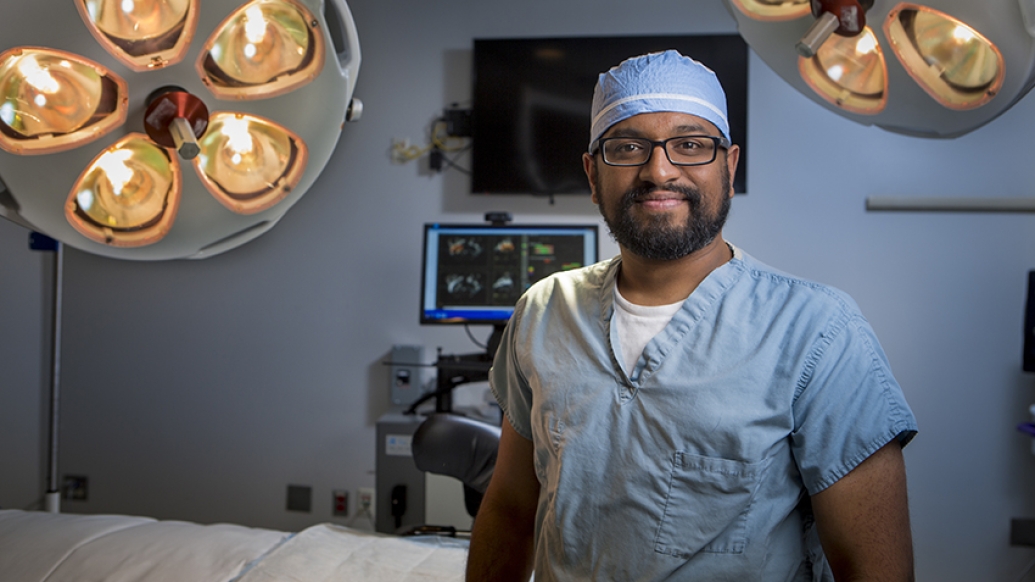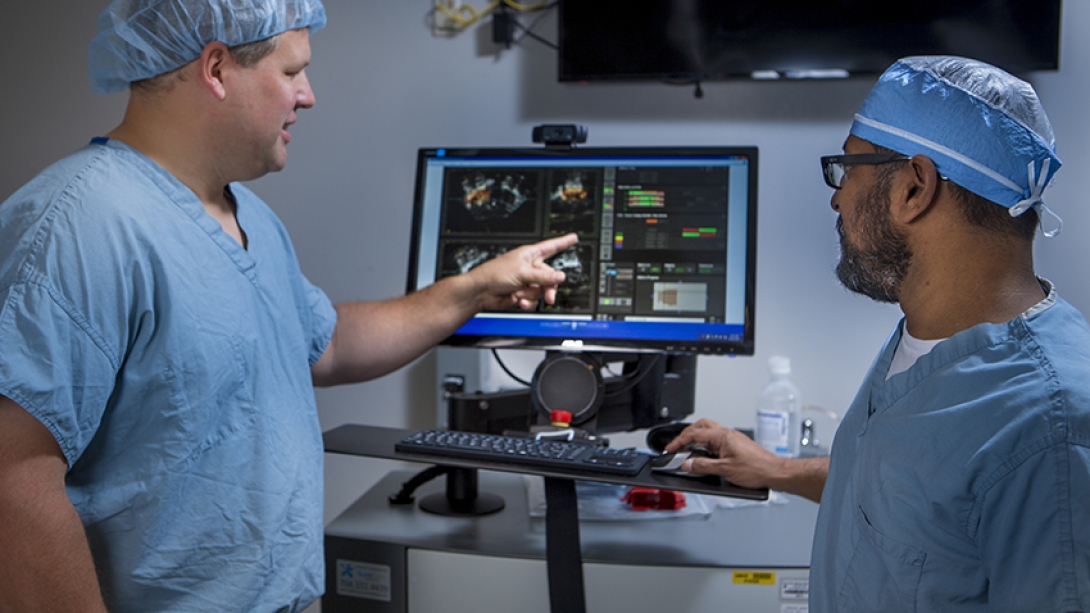Using ultrasound waves, an individualized approach to treating prostate cancer might offer several big benefits. A Michigan Medicine urologist explains.
7:00 AM
Author |

A new treatment option for some prostate cancer patients could radically change how doctors combat the disease — helping recipients bounce back faster and without side effects such as urinary incontinence and loss of erectile function.
MORE FROM MICHIGAN: Sign up for our weekly newsletter
Known as high-intensity focused ultrasound (HIFU), the technology deploys ultrasound waves via the rectum to target cancerous tissue.
That marks a shift from current prostate cancer treatment options in the United States: active surveillance to monitor for development of aggressive cancer or radiation therapy and prostatectomy (surgery that involves full removal of the prostate).
HIFU, by comparison, is "a middle ground," says Arvin George, M.D., an assistant professor of urology at Michigan Medicine.
"It's a minimally invasive procedure that can provide cancer control and that can delay, potentially indefinitely, the need for surgery or radiation."
Another upside: It's precise.
Initially determined using an MRI-guided biopsy, the targeted zone absorbs energy from the HIFU waves, converting it into heat. Bubbles form within cells during the two- to four-hour treatment and cause the cells to break up, thus destroying the cancerous tissue.
Patients feel little pain afterward and are monitored periodically to ensure the cancer hasn't returned.
Performed elsewhere, mostly in Europe, since the 1990s, the Food and Drug Administration approved HIFU for prostate ablation in 2015.
It became available at the University of Michigan Comprehensive Cancer Center in September.

What to know about high-intensity focused ultrasound
George, in his own words, spoke more about the technology and its potential:
How it works: The HIFU procedure essentially uses ultrasound waves directed to a specific area of the prostate. Focused on that point, it generates heat to destroy the affected tissue. Bubbles form and break up the affected tissue. Your body eventually absorbs the treated area and breaks it down.
Who might be a candidate: We don't necessarily treat high-risk prostate cancer with HIFU. We usually look for patients with low- to intermediate-risk cancers. The goal is to avoid affecting the nerves that run just behind the prostate on the left and right side, so the ideal patient is someone whose cancer is not close to the nerves or other vital structures.
Why it's effective: It's very precise. You can plan your treatments around a very small area you want to treat. This is a lot more patient-specific. We can treat two groups: those with a very specific spot of cancer and those whose cancer is confined to one side. We can safely treat one-fourth or one-half or three-quarters of the prostate.
SEE ALSO: How Technology Is Making Prostate Cancer Biopsies More Precise
How it affects quality of life: Compared to major surgery or radiation, the side effects — risks of incontinence and losing erectile function — are much lower. HIFU allows men to avoid or live without such side effects for a period of time if they are ever to require whole gland treatment in the future.
How patients recover: Done under general anesthesia, this is a well-tolerated outpatient procedure. It doesn't require hormone therapy or radiation. Conventional treatments result in a lot of downtime; radiation requires about 40 treatments. With surgery, you're out of work for a few weeks with potentially long-lasting side effects. Here, patients go home the same day.
What it costs: HIFU costs about $20,000 to $30,000. Recently, a Medicare C-code was introduced that would cover facility costs in our region — which will likely decrease the out of pocket cost to the patient to anywhere from $8,000 to $11,000. As we get more available data, I think there's a stronger path for approval [in other regions]. You need to be able to prove the treatment is effective.
What questions remain: We don't yet have long-term data. It may not be as effective as surgery or radiation in the long term. However, some men don't need such invasive treatments. There is a risk — about 20 to 30 percent — that it can come back. But you can treat a patient again with focal therapy if needed, and you don't lose the option of doing surgery or radiation.
For more information about HIFU for prostate cancer, call U-M's Cancer AnswerLine™. Call 1-800-865-1125 from anywhere in the country to connect with an experienced oncology nurse.

Explore a variety of healthcare news & stories by visiting the Health Lab home page for more articles.

Department of Communication at Michigan Medicine
Want top health & research news weekly? Sign up for Health Lab’s newsletters today!





